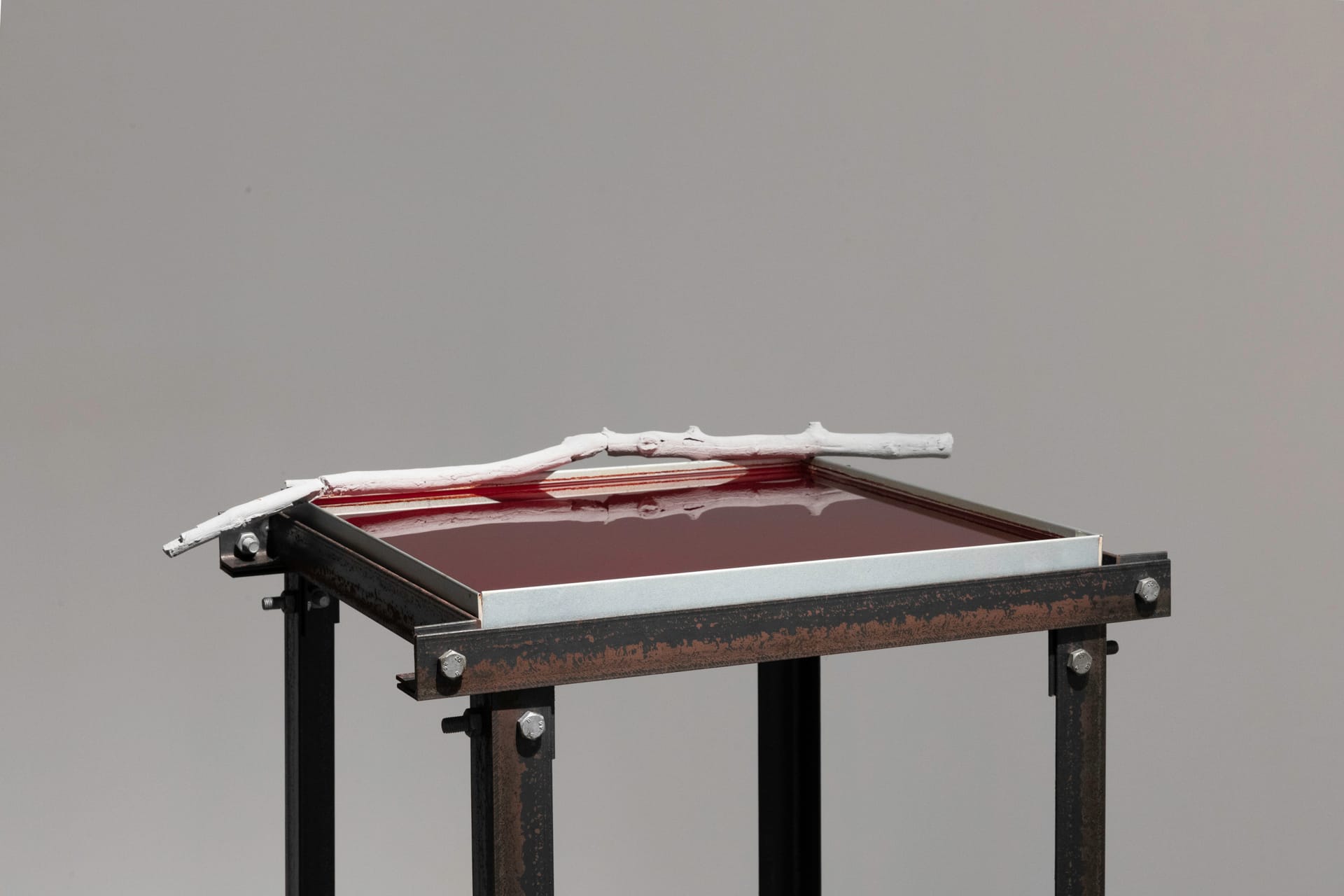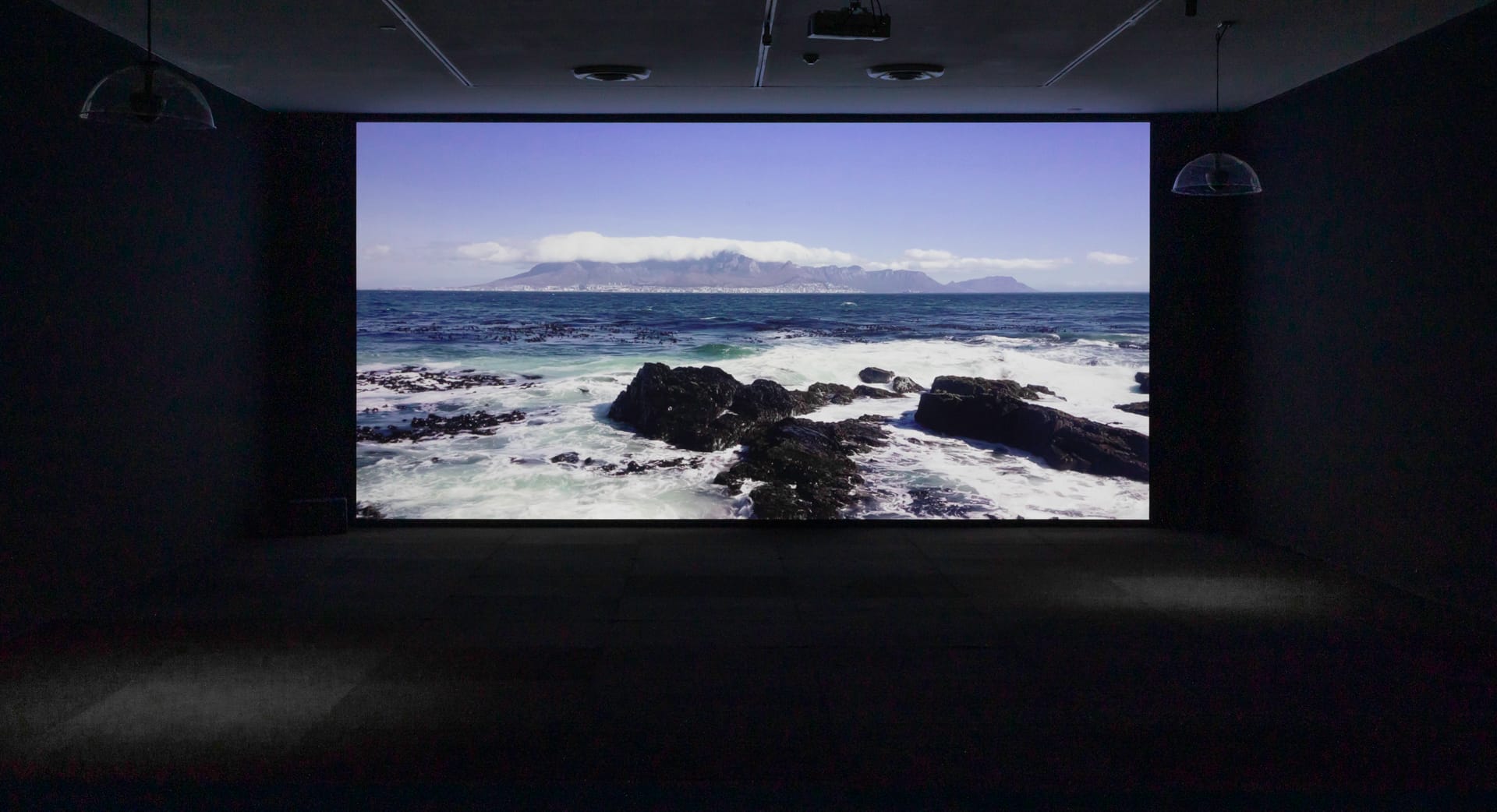Shows
“in every room” at Campbelltown Arts Centre

in every room
Campbelltown Arts Centre
Campbelltown
Jul 5–Sep 14, 2025
Addressing the metaphorical “elephant in the room” is no easy feat; the acknowledgement of what is obvious yet complex—and likely contentious—demands due care and nuance. Curated by Isabelle Morgan and Emily Rolfe of Sydney’s Campbelltown Arts Centre in collaboration with guest curator and artist, Eddie Abd, “in every room” directly confronted the ruinous aftermath of several geopolitical events and their ongoing effects. The group exhibition brought together six contemporary artists from across Australia—Lara Chamas, Jagath Dheerasekara, Kuba Dorabialski, Roberta Joy Rich, Sancintya Mohini Simpson, and Curtis Taylor—whose works draw upon their personal and communal histories. The show boldly reckoned with fraught histories, provoking an urgent reflection about our own inheritances, complicities, and responsibilities in times of struggle.
Within the gallery, Lara Chamas’s new five-piece installation, titled Dawa Ahmar دواء أحمر , was dispersed throughout the central room of the exhibition. Referencing Byzantine Empire mosaics stored in the 18th-century Beit ed-Dine Palace in Lebanon, Chamas recreated sections of her grandmother’s prayer mat using hand-cut glass tiles, concrete, and betadine-stained grout. Each mosaic remains incomplete, elevated by unpolished metal stands, recalling the architectural debris of an airstrike or explosion. For almost two years, Israel has inflicted a genocidal regime on Gaza, with airstrikes also targeting Lebanon, Syria, and Iran. A sixth stand nearby holds a tray filled with betadine, its crimson-brown hue reminiscent of blood marks an indexical trace to Chamas’s process of spilling the iodine solution onto the grout. Here, the betadine holds a double valence: the bloodshed of state-sanctioned violence, and the bloodline that connects Chamas to her grandmother and to Lebanon. Dawa Ahmar دواء أحمر serves as a powerful metaphor for what is lost and, perhaps more importantly, for what survives—a pervading thread throughout the entire show.


Installation view of LARA CHAMAS’s Dawa Ahmar, 2025, five-part mixed-media installation, dimensions variable, at “in every room,” Campbelltown Arts Centre, Sydney, 2025. Photo by Silversalt Photography. Courtesy Campbelltown Arts Centre.
On the adjacent wall, Sancintya Mohini Simpson also turned to her matrilineal lineage in JAHAJINS/SHIP-SISTERS (2023) to address the gaps and silences within the colonial archive. As a descendant of indentured laborers sent from India during the British Raj (1858–1947) to work on sugar plantations in South Africa, Simpson’s paintings depict the oft-unseen experiences of indenture for Indian women. Across a grid of 15 handmade wasli paper panels, the minutiae of the women’s everyday lives are rendered visible: they are cooking, washing, birthing, walking, sweeping, carrying, resting. While the work depicts their agricultural and domestic labor, that is not what defines them. Instead, it is the sustaining relationships formed between the women as jahajin (ship-sisters) that are memorialized. By focusing on the strength of sisterhood, Simpson reimagines the stereotypical narratives of exploitation and dehumanization that overdetermine histories of indentureship.

Shooting off from the center of the exhibition were four darkened spaces, each dedicated to the works of the remaining artists, all of which were single or multichannel video installations. Martu artist Curtis Taylor’s Ngarnda (2019)—which shows rivulets of blood streaming across the artist’s face, hands, and back—captures the visceral horrors of settler-colonialism and evokes a profound sense of loss. Jagath Dheerasekara’s Gaja: a story of the elephant (2025) highlights the devastating environmental and cultural impacts of European colonial rule—under the Portuguese, Dutch, and the British— by focusing on the present-day plight of Sri Lanka’s declining elephant population. In particular, Dheerasekara’s film calls attention to the British’s clearing of vast swaths of rainforest in Sri Lanka’s central hills to make way for profitable plantations, such as for tea. A highly informative sequence of archival footage is featured alongside outtakes from a simulated catwalk performance in which the models don embroidered garments with multiple screen-printed elephants. In these motifs, the elephants’ bodies appear flattened and splayed, an unsettling image that points to a devastating reality.
In the adjoining room, Roberta Joy Rich’s !Norasa Khâimâ: Aiho Aboxan “Dawid Stuurman” (2025) attempts to reconstruct the life of David Stuurman—a Khoikhoi chief who was transported from KhoiSan territory (South Africa) to the Australian penal colonies in the early 1800s for resisting British colonial rule. Before a surging oceanscape, the fight for justice resounds in a reimagined letter from Stuurman (lifted from state archives) narrated in his Khoikhoi language.


Installation views of (left) ROBERTA JOY RICH’s !Norasa Khâimâ: ǂAiho Aboxan “Dawid Stuurman”, 2025, mixed-media installation with single-channel HD video, five-channel sound, stainless steel and print on aluminum composite material: 10 min; and (right) KUBA DORABIALSKI’s Field Recording, 2025, single-channel video with sound: 25 min, at “in every room,” Campbelltown Arts Centre, Sydney, 2025. Photo by Silversalt Photography. Courtesy Campbelltown Arts Centre.
Lastly, Kuba Dorabialski’s Field Recording (2025) looks at—and listens to—the lingering traces left on Sarajevo’s psychic and physical landscape 30 years after the tragic Bosnian War. Between 1992 and 1995, Serbia attempted to ethnically cleanse Bosnian territory by systematically removing all Bosnian Muslims, known as Bosniaks. However, recounting the atrocities of war is not the sole impetus of Dorabialski’s film; but rather, the ethical obligations and responsibilities of artists to engage with political conditions. In a perceptive and reflexive examination of such onus, Dorabialski raises a pressing and unresolved question: What does an artist do in the face of historical trauma?
Unveiling the proverbial elephant in the room is only the first step. In line with this approach, “in every room” demanded witness—to be galvanized by discomfort instead of being pacified by overwhelm. And, as demonstrated in the collection of books selected by the artists and curators in the exhibition’s youth space, it is never too early or too late to ignite those so-called “difficult” conversations.
June Acido Miskell is a writer, editor, and sessional academic based on Wangal and Gadigal Country, Sydney.



![Thailand Biennale, Phuket 2025: Eternal [Kalpa]](/content/images/size/w600/2025/09/01-Header_Maree-Sheehan-and-Alex-Monteith_Site-Doc-Koh-Surin_2025.jpg)



